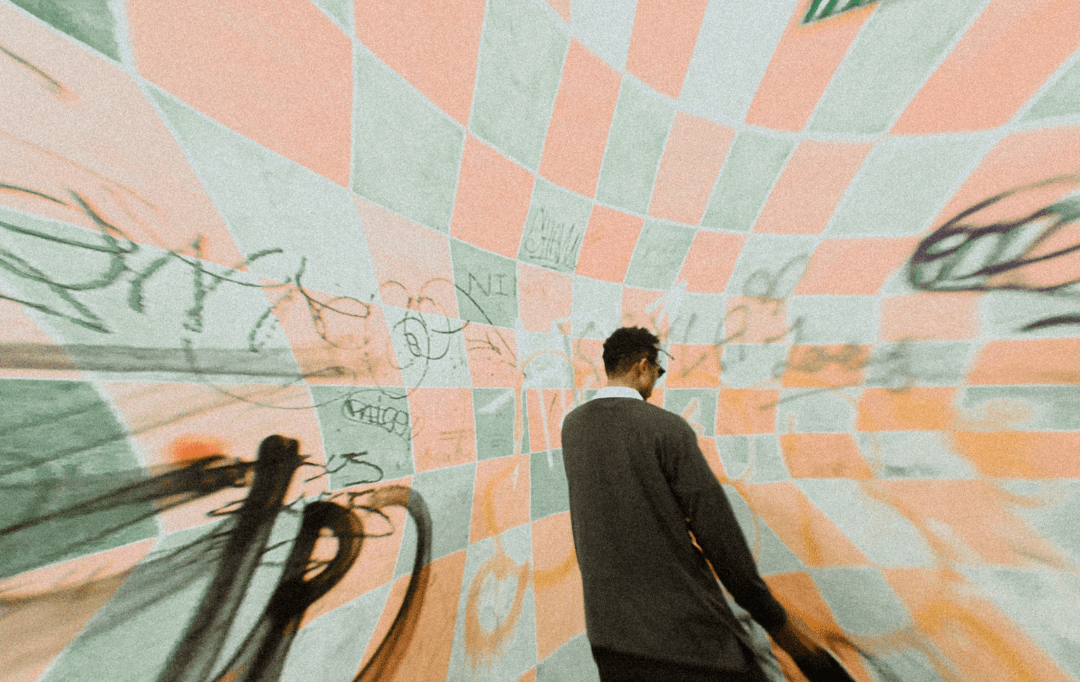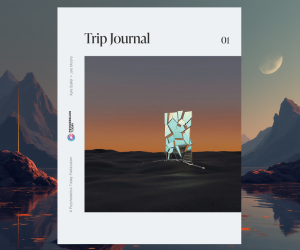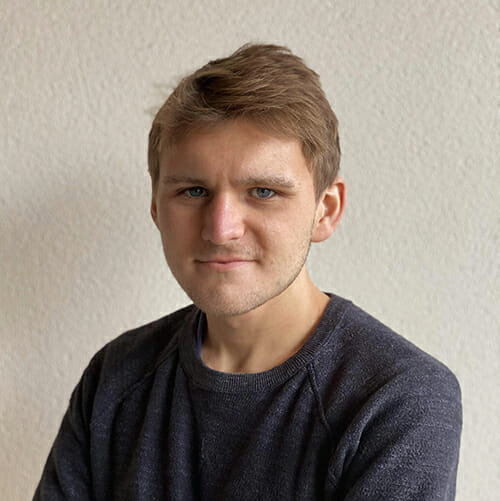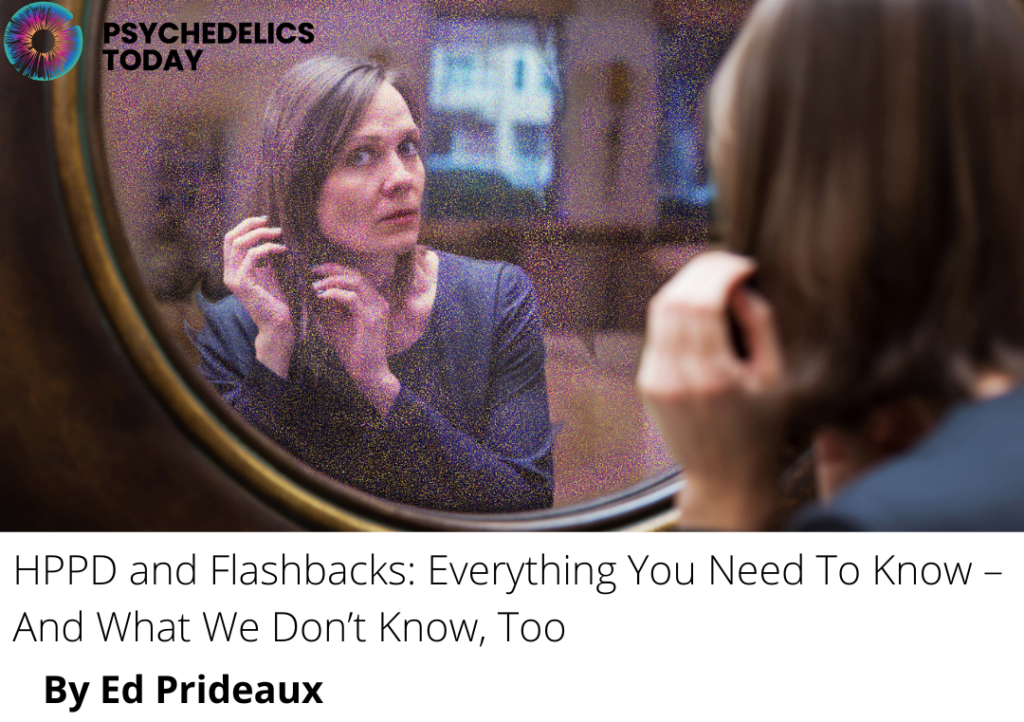In last week’s blog, Ed Prideaux told us everything we know (and don’t) about Hallucinogen Persisting Perception Disorder (HPPD), visual snow syndrome, and flashbacks. In part 2, he addresses ways to deal with the distress of having HPPD and ways to reduce the risk of developing it in the first place.
The real “problem” with HPPD is distress: anxiety, depression, isolation, panic, and the unhelpful coping mechanisms people can develop to overcome these (alcoholism and drug dependency are sadly common among HPPD patients). Remember, this distress is what technically defines HPPD.
Many people live with significant visual changes and do not find them distressing – rather, they may be sources of enjoyment, “free trips,” artistic inspiration, or purposefully leaned into as part of spiritual or occult practice. The world looking different doesn’t necessarily mean you have a problem.
If you’re currently experiencing HPPD, though, overcoming the distress should probably be your first priority. Speaking crudely, once the distress is overcome, the visuals can more or less “take care of themselves.” With less distress, there is less fixation. With less fixation, there is less noticing. With less noticing, the visuals are less noticeable. They may rapidly normalize, filter in the background, and can disappear unexpectedly with time.
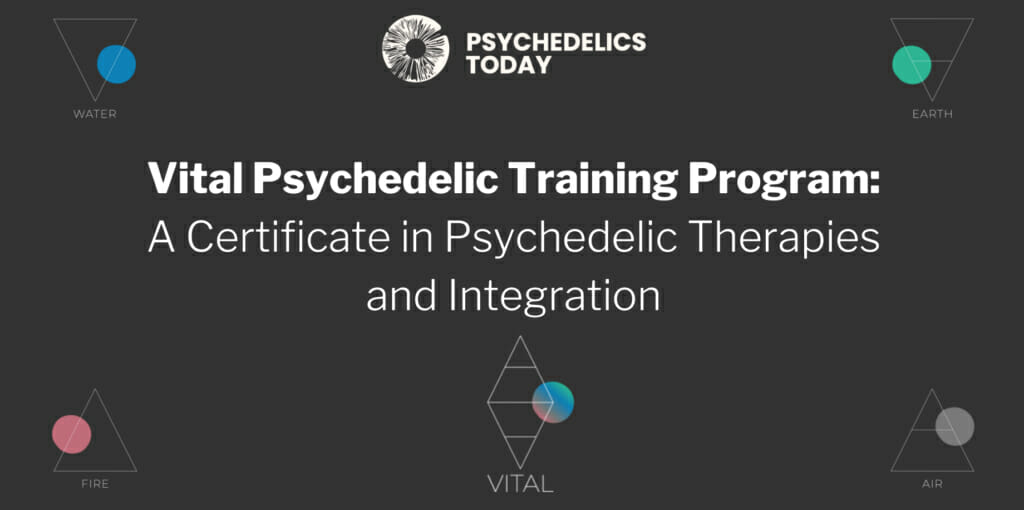
How Can We Address This Distress – and Bring the Visuals Down?
Medication and clinical help:
Many in the HPPD community have found relief in the use (especially in the short-term) of medications including Lamotrigine and Klonopin. They can bring visuals and anxiety way down, though some report their symptoms getting worse. They can always bring side effects, too, so some caution is advised.
Do not be surprised, either, if clinicians have not heard of HPPD. It is little-known and poorly-understood. It may be useful to refer your clinician to the Information Guide included on the Perception Restoration Foundation’s website.
Healthy lifestyle changes:
Many HPPD patients report the decline and resolution of their symptoms – or otherwise acceptance and returning to “normal” life after avoiding further drug-taking, exercising regularly, cutting out processed foods, or trying specific elimination diets.
Noting Triggers:
Pay attention to your triggers and act accordingly. Visuals and other HPPD symptoms can surface in response to:
- Fatigue
- Stimulation, including caffeine
- Anxiety and stress
- The nature of the environment: visuals are more apparent in the dark, on blank surfaces, in enclosed rooms, and in environments where people had their original psychedelic experiences
- Specific foods
- Fixation and attention, including staring at blank surfaces and an anxious tendency to look out for visuals
- Intoxication with other drugs, especially cannabis
You should also pay special attention to how your condition manifests beyond visuals, in particular, if you are experiencing Depersonalization/Derealization Disorder. More than visuals, it’s often the case that people’s distress comes from DP/DR, and a rich body of literature and therapeutic approaches have been explored for this condition.
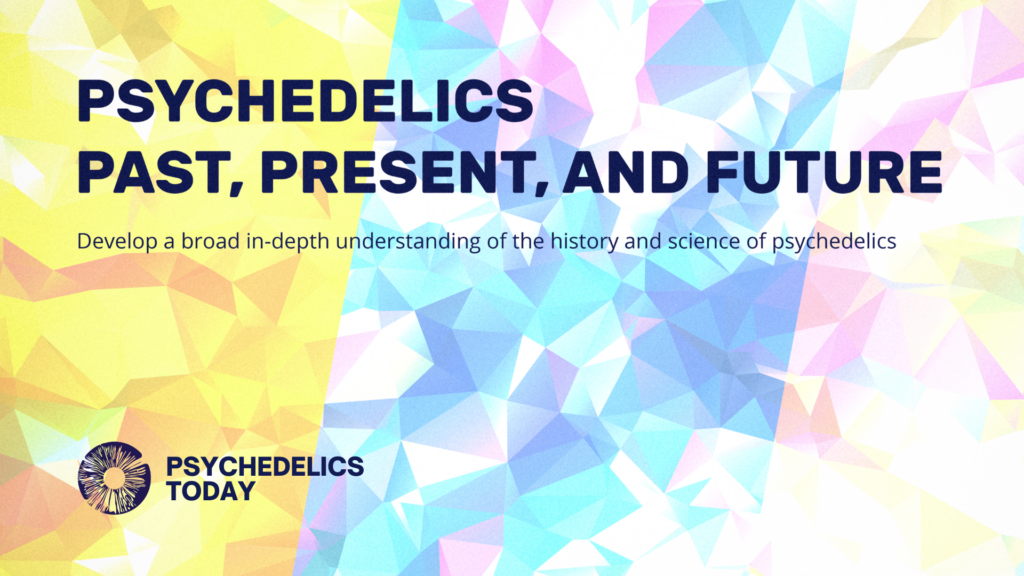
Community: You can seek community from others, such as groups on Facebook, or the forums at HPPDOnline.com, r/HPPD, or r/visualsnow. However, tread cautiously around spending too much time on these forums. They can be extremely negative, and cause people to spiral and fixate on their perceptual changes.
Mindfulness meditation: The stress reduction and relaxation effects of meditation are well-established; many report breaking the cycle of visual fixation through learning to hone their attention.
Cognitive techniques: Cognitive Behavioral Therapy (CBT) and Acceptance and Commitment Therapy (ACT) may be useful for accepting and reframing perceptual changes. Challenging the internal beliefs triggered by HPPD could reduce both distress and the visuals – in particular, the beliefs that patients are “brain damaged,” “weird,” “isolated,” or a “casualty.”
Psychedelic integration: Introspection, journaling, and (if you can find and afford it) specialist, psychedelic-informed counseling can be helpful. In particular, you may benefit from exploring the particular details and events of what may have caused HPPD to originally materialize.
Somatic approaches: Certain somatic/bodily therapies have proven helpful for people with Visual Snow Syndrome. This includes the use of acupuncture, muscle relaxation techniques, neck massage, and specific dietary interventions.
Reframing: It may be helpful to learn that many people are not troubled by their perceptual changes. Again, they can be just a “thing” – how one sees now – that’s different, and not necessarily bad. Other people actively enjoy their perceptual changes or view them in a spiritual way, such as glimpsing auras, having broadened the possibility of the mind, or in seeing the intrinsic shakiness of ordinary experience.
Without a deep, embodied grounding for your reframing, though, it can be hazardous. Make sure the frame is not just “in your head,” but truly held across your entire mind and body in a felt way. Don’t gaslight yourself into enjoying your perceptual changes if they are actually disturbing you.
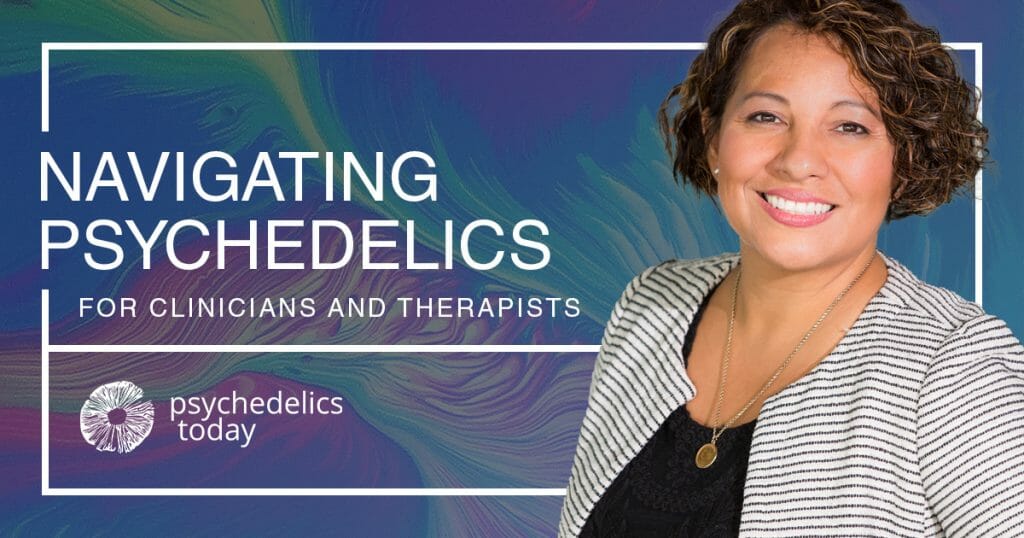
How Can One Reduce the Risk of Developing HPPD When Taking Psychedelics?
There is reason to suspect that the immediate period after a trip – say, one-to-five days – is important. This is because the brain is still neuroplastic and affected by psychedelics for up to a week (or longer) after the trip. And HPPD may be understood as a problem of “resetting” one’s brain back into its ordinary perceptual categories after the shock of a psychedelic experience.
If you want to avoid HPPD, what matters is ensuring that your perception re-transitions to its prior sober state safely. In this one-to-five day period, it may be advised, then, to:
- Sleep well.
- Avoid cannabis and further drug-taking. Some people report that their HPPD was “kicked in” by a subsequent drug experience.
- Process the psychedelic experience through dedicated integration practices, such as journaling, contemplation, meditation, and inquiry. Speaking very crudely – and because HPPD may well be a “network disorder” involving cross-connected mixtures of perception, emotion and cognition – it may be that failing to integrate the experience may cause the energy to remain and be reactivated, including in cognition and possibly in perception (especially if the right triggers are also hit).
- Keep stress and anxiety to a minimum.
- Re-embodiment, or reconnecting to body sensations. Practices may be recommended, including through mindfulness meditation. This may help to reduce the risk of dissociative disorders like Depersonalization/Derealization as well.
- Reduce screen use. Focusing on screens may cause a disembodying effect, as well as holding back the psychological energies activated by the psychedelic experience.
- Avoid triggering environments, such as places that are enclosed or rich in blank surfaces, and try not to self-induce visuals through staring and fixation. If someone wants to be extra careful, they may wish to avoid the place where they had their psychedelic experience. “Training” the brain in hallucinatory ways of seeing while it’s neuroplastic may cause lingering changes once neuroplasticity is reduced and stable categories are reaffirmed.
Important Questions to Ask Before Having an Experience
Have you optimized your set and setting?
HPPD seems to be more likely after bad trips or challenging experiences – the likelihood of which strongly depends on how people organize their set and setting. In particular, stress and trauma going into a psychedelic experience may be a trigger for HPPD experiences, even at low dose (and microdose) levels.
Have you experienced some unusual visuals before?
HPPD patients may have had a higher-than-normal experience of certain visual oddities, which are rare parts of normal perception. In particular, phenomena like visual snow, halos, after-images, floaters, and colors in the dark may suggest an underlying tendency in perception that could be triggered by a psychedelic drug to be more intense.
Have you tested your drug? If so, what drug are you taking?
HPPD may be more likely with Novel Psychoactive Substances (NPSs) and Research Chemicals (RCs) with more unpredictable, less-researched, and possibly neurotoxic effects. Adulterants in street drugs may also have neurotoxic and other risky properties.
It seems that long-acting psychedelics like LSD are more likely to cause HPPD. While LSD may have certain advantages over other psychedelics subjective to each user, someone very conscious of developing HPPD (at least compared to other risks) may wish to avoid LSD in favor of a shorter-acting psychedelic.
How often are you tripping?
Taking lots of psychedelics frequently is likely to be correlated with a higher risk of developing HPPD. This can be explained in a number of ways:
- A higher likelihood of having a bad trip
- Activating a latent genetic susceptibility
- More likely to over-excite relevant perceptual circuits
- More “re-training” of perception in hallucinatory ways of seeing
- Less time in which to integrate properly one’s experiences, and a possibility of a “cascade” of neuroplasticity from taking psychedelics while still in a neuroplastic state
Do you have experience of Obsessive Compulsive Disorder (OCD), Autism Spectrum Disorder (ASD), Complex PTSD, Generalized Anxiety Disorder (GAD), or Attention Deficit (Hyperactivity) Disorder (ADD/ADHD)?
While there has not been research on the relationship of HPPD to these conditions, reviews of online forums directly and indirectly suggest a relationship. People with Visual Snow Syndrome seem to experience these conditions more than average based on rough overviews, and people with these conditions may independently report certain visual changes similar to HPPD. If there is a relationship between HPPD and these conditions, the connection may occur through tendencies towards disembodiment, hypersensitivity, overstimulation, and dissociation, all of which may have visual components – and may be amplified by psychedelic experience.
For more, this article’s tips, advice, analysis (and more) is also featured in a more in-depth HPPD Information Guide, which can be freely downloaded from the Perception Restoration Foundation’s website, where a more direct guide for those struggling with HPPD is also hosted. Owing to the tentative nature of our HPPD knowledge base, the PRF invites any and all comments and criticisms for the Guide at info@perception.foundation, and any worthwhile amendments will be quickly published.
